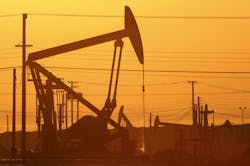Residents Living Near Gas Wells and Fracking Report More Physical Ailments
Little is known about the environmental and public health impact of certain natural gas extraction techniques – including hydraulic fracturing (fracking) – that occur near residential areas. A new study published Sept. 10 in Environmental Health Perspectives, a journal of the National Institutes of Health, found that nearby residents experience more health issues than people who do not live near natural gas wells or fracking operations.
“Our study suggests that natural gas drilling may increase the risk of health symptoms in people living near the wells,” said the study’s senior author Meredith Stowe, associate research scientist at the Yale Occupational and Environmental Medicine Program and lecturer at the Yale School of Public Health. “We believe our findings support the need for further research into the health and environmental implications of this form of natural gas extraction.”
The researchers conducted a random survey of 492 people in 180 households with ground-fed water wells in southwestern Pennsylvania, where natural gas extraction activity is significant. According to the Pennsylvania Department of Environmental Protection, there were 624 active natural gas wells in the survey area. Of those, 95 percent produce gas via hydraulic fracturing.
The researchers compared proximity of gas wells to the frequency of self-reported skin, respiratory, gastrointestinal, cardiovascular and neurological symptoms over the past year. The environmental health survey was general and did not ask specific questions about natural gas extraction or fracking in the area. This was an association study and did not look for causation.
See Related Article, "Study: Fracking Could Be Killing Farm Animals, Pets."
The prevalence of some reported health symptoms increased among residents the closer they live to natural gas wells, according to researchers. Reports of skin conditions were more common in households less than 1 kilometer from gas wells compared to those more than 2 kilometers from the gas wells. Reported upper respiratory symptoms also were greater in homes closer to wells. The study did not find a significant increase in grouped neurological, cardiovascular or gastrointestinal symptoms among those living in homes closer to natural gas wells.
“The effect we found persisted in the analyses, even after adjusting for gender, age, educational level, smoking and awareness of environmental risk factors,” said first author Peter Rabinowitz, M.D., who led the research while at Yale and is now an associate professor in the Departments of Environmental and Occupational Health Sciences and Global Health at the University of Washington’s School of Public Health.
Other study authors are Ilya Slizovskiy, Vanessa Lamers, Sally Trufan, Theodore Holford, James Dziura, Peter Peduzzi, Michael Kane, and Theresa Weiss of Yale University; and John Reif of Colorado State University.
About the Author

Sandy Smith
Sandy Smith is the former content director of EHS Today, and is currently the EHSQ content & community lead at Intelex Technologies Inc. She has written about occupational safety and health and environmental issues since 1990.
